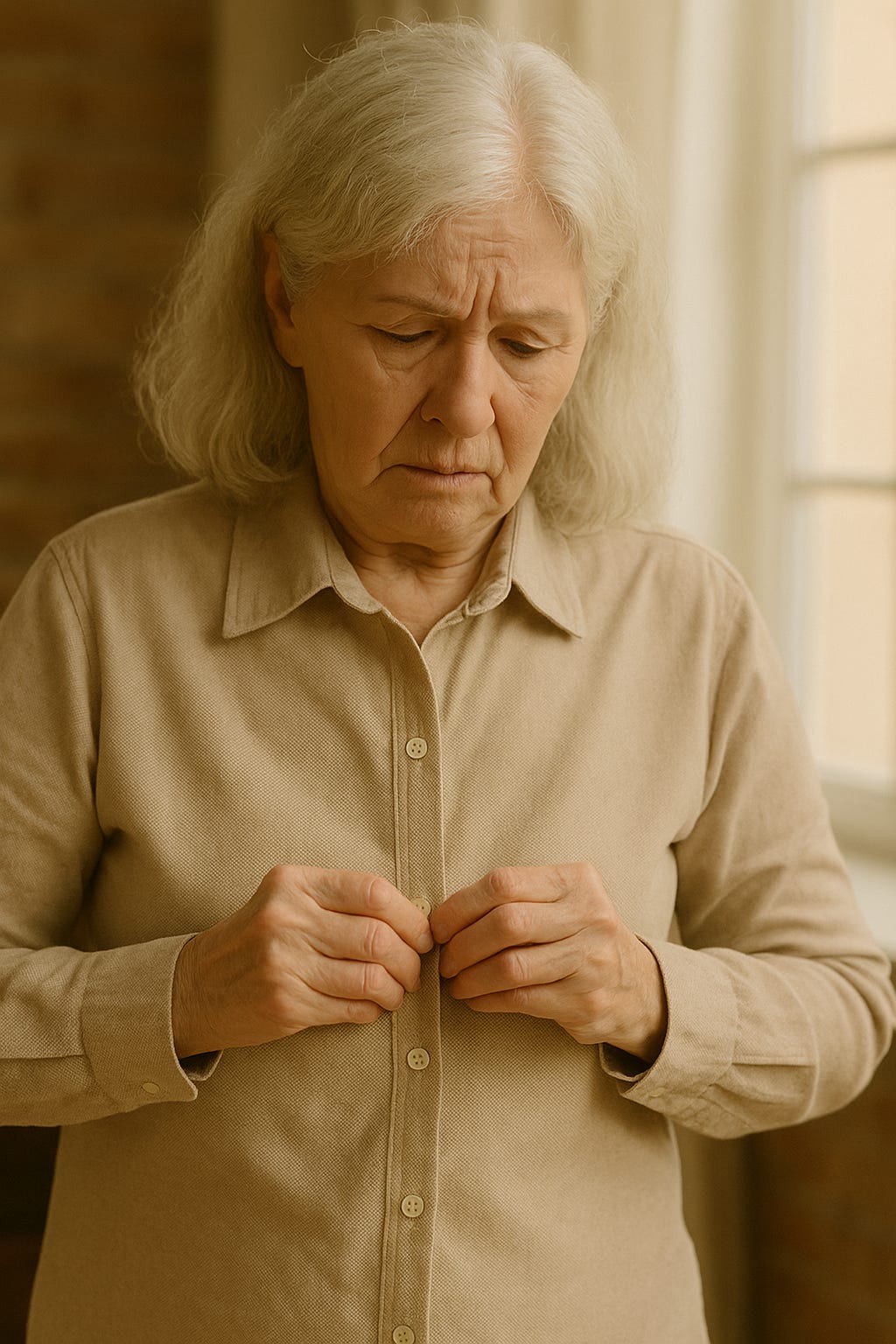When Your Hands Don’t Listen
Why dexterity fades with age — and simple ways to bring it back.
If you’ve ever struggled to open a jar that used to twist easily, dropped your keys more than once in a day, or found your fingers less steady when writing or buttoning a shirt — you’re not alone.
Many adults begin noticing these small changes in their 60s and 70s. They may seem minor at first, but they can quietly affect independence and confidence. Our hands are central to daily life — cooking, gardening, typing, sewing, holding a grandchild’s hand. So when they don’t cooperate the way they used to, it can feel discouraging.
The encouraging truth is that hand dexterity and strength can be rebuilt at any age with simple, consistent effort. Let’s look at what causes the changes and what can help restore comfort and control.
What Happens to Our Hands as We Age
Changes in hand strength and coordination are part of the natural aging process — but they’re not inevitable losses. Understanding what’s going on helps you take practical steps to protect your independence.
1. Muscle Loss (Sarcopenia)
After about age 60, we naturally lose small amounts of muscle each year, including the tiny stabilizing muscles in our hands. That leads to weaker grip strength and quicker fatigue when doing everyday tasks.
2. Joint Stiffness
Cartilage — the smooth tissue cushioning joints — gradually thins over time. As it does, fingers and wrists can feel stiff or sore, especially first thing in the morning or in cooler weather.
3. Reduced Circulation
With age, blood flow to the extremities can decrease, limiting oxygen and nutrients to muscles and tendons. This can make hands feel cold, tight, or slower to respond.
4. Slower Nerve Communication
The messages that travel from the brain to the fingertips slow slightly with age. That can make fine motor skills, like fastening jewelry or using utensils, more difficult.
5. Less Flexible Tendons and Ligaments
The connective tissues that allow fingers to bend and stretch lose some elasticity over time. This makes movements feel restricted and can cause discomfort when stretching or gripping.
Together, these small shifts affect how we move, grip, and react — but they can be managed and even improved with consistent care.
🧠 The “Use It or Lose It” Principle
The coordination between the brain, nerves, and muscles thrives on regular use. When that communication weakens, so does dexterity.
But the body — and especially the brain — remains adaptable throughout life.
Through a process called neuroplasticity, the brain can re-learn and strengthen the pathways that control movement, even in later years. Every time you squeeze, stretch, or move your hands intentionally, you’re reinforcing those connections.
That’s why short, daily exercises can produce meaningful improvements in strength, mobility, and confidence.
💪 A Gentle 5-Minute Routine for Stronger, Steadier Hands
This simple routine can be done anywhere, seated or standing, and requires no special equipment.
Warm Up Your Hands
Rub your palms together or soak them in warm water for a few minutes. Warm tissues move better and hurt less.Open and Close
Make a loose fist, then stretch your fingers wide apart. Repeat 10–15 times to improve circulation and mobility.Grip Strength
Squeeze a soft stress ball, rolled-up towel, or therapy ball. Hold for 3 seconds, then release. Repeat 10 times per hand.Pinch Practice
Gently press your thumb to each finger, one at a time. You can use a sponge, eraser, or putty to add light resistance.Finger Stretch
Place a small elastic band around your fingers and slowly open your hand outward. This strengthens underused muscles.Wrist Circles
Rotate your wrists slowly in each direction to keep joints flexible and prevent stiffness.
Even a few minutes a day can make a noticeable difference over time. The goal is to move regularly — not forcefully.
🧰 If You Want a Little Extra Help
If you’d like some extra support or guidance, we can recommend one of our gentle hand-exercise products. Our Hand Therapy Exercise Kit is designed specifically for adults over 60, making daily hand exercises safe and easy to follow.
Each kit includes:
2 Color-Coded Squeeze Balls – soft and medium resistance to build grip strength gradually
2 Therapeutic Putty – improves finger coordination and joint flexibility
1 Finger Stretcher – opens stiff fingers and improves range of motion
1 Hand Gripper – strengthens grip and forearm endurance
1 Easy-Carry Travel Bag – portable and simple to store
1 Illustrated Exercise Guide + Video Tutorials – senior-friendly and easy to follow.
Many of our readers have already tried these simple hand exercises and shared how much they’ve helped. Here’s what some of them said:
🌿 What to Expect with Regular Practice
Progress happens gradually — usually within a few weeks of consistent movement.
Common improvements include:
Easier gripping, opening jars, or carrying groceries
Less morning stiffness or fatigue
Improved handwriting and fine motor control
Stronger confidence in daily tasks
Greater comfort and circulation in the hands
Small, steady effort adds up. The goal isn’t perfection — it’s freedom and ease in everyday movement.
❤️ The power is still in your hands
Losing hand strength doesn’t mean losing independence.
Our hands have worked hard for decades — they’ve built, cooked, written, cared, and comforted. They deserve the same care and attention we give to the rest of our health.
With just a few minutes of warmth and movement each day, your hands can stay strong and steady for years to come.






Thank you for this information it’s very useful. xx
If your grip is weak, probably all your other muscles are weak, too. In scientific studies, Grip strength as a proxy for other muscles was related to people’s survival. It is very important to strengthen your grip but do not forget about all other major muscle groups, especially the ones involved in your mobility and posture.